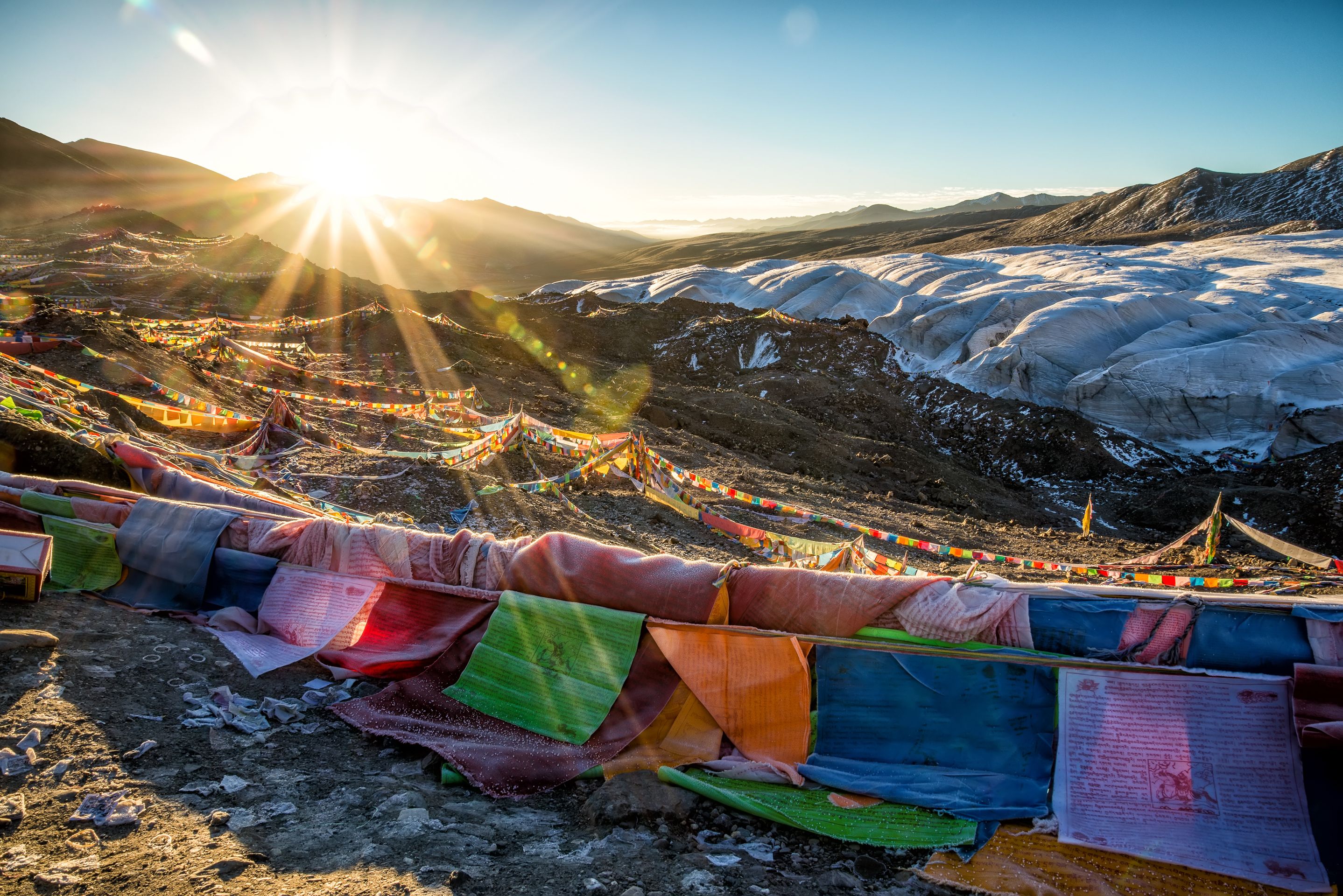Of child deities and thieving monkeys
Publicēts: 27.03.2024
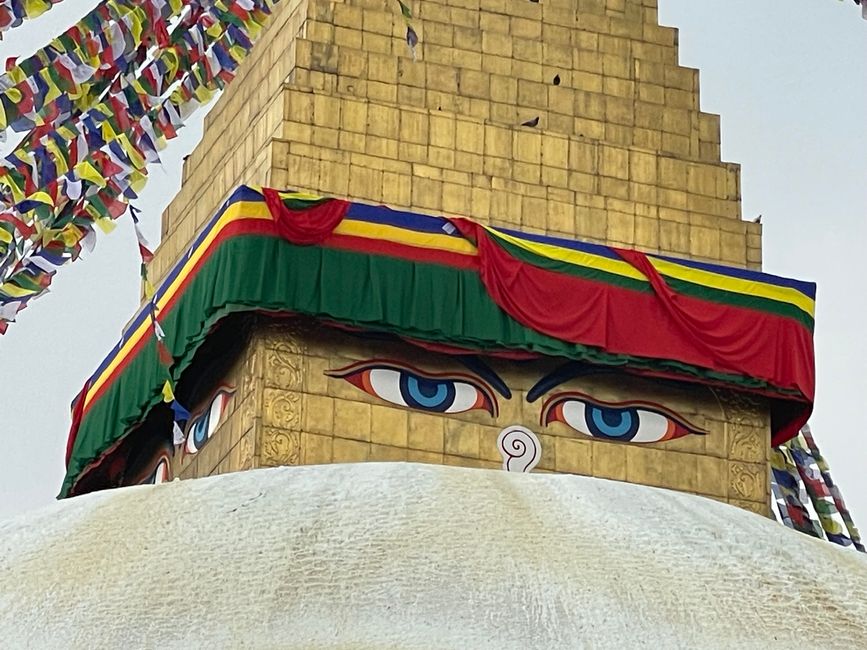
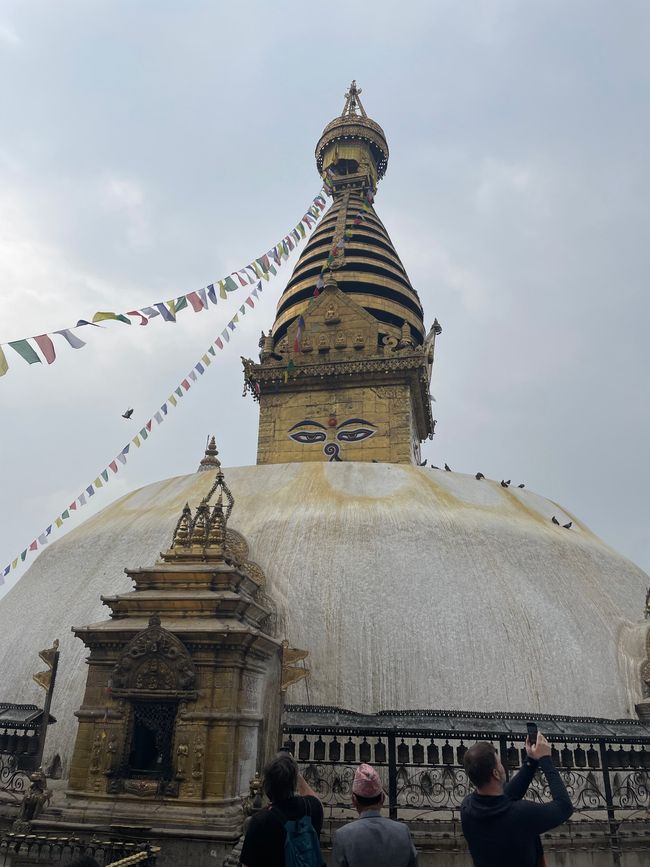
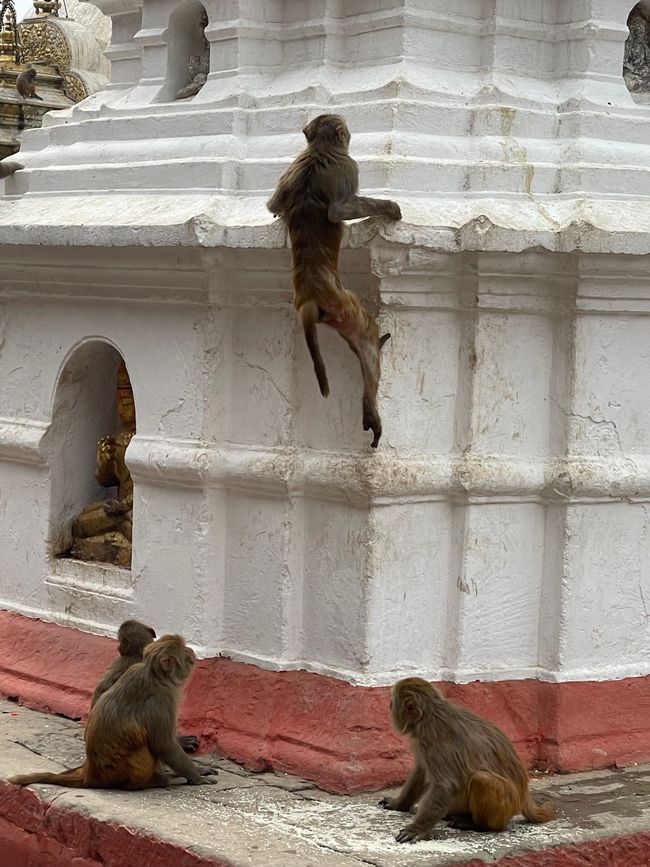
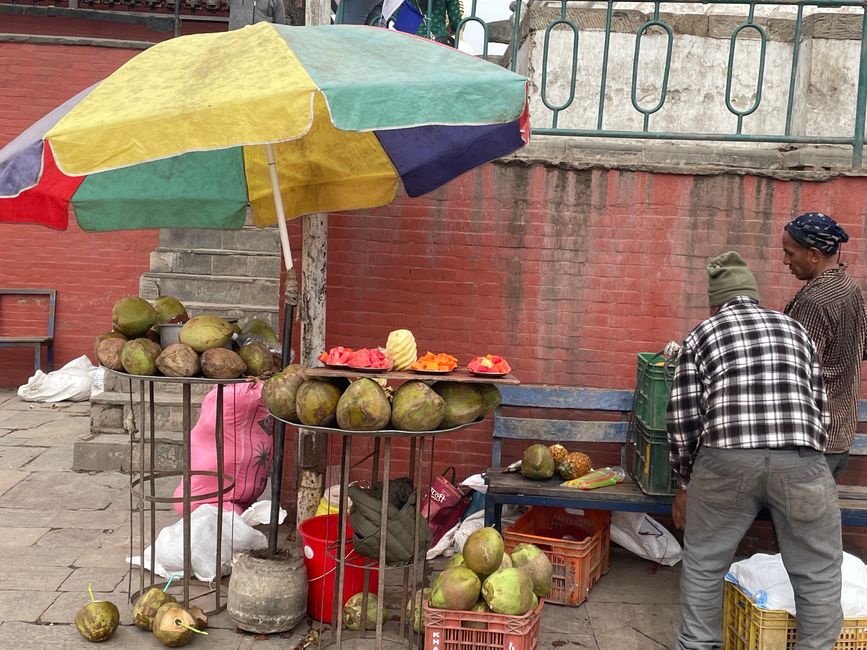

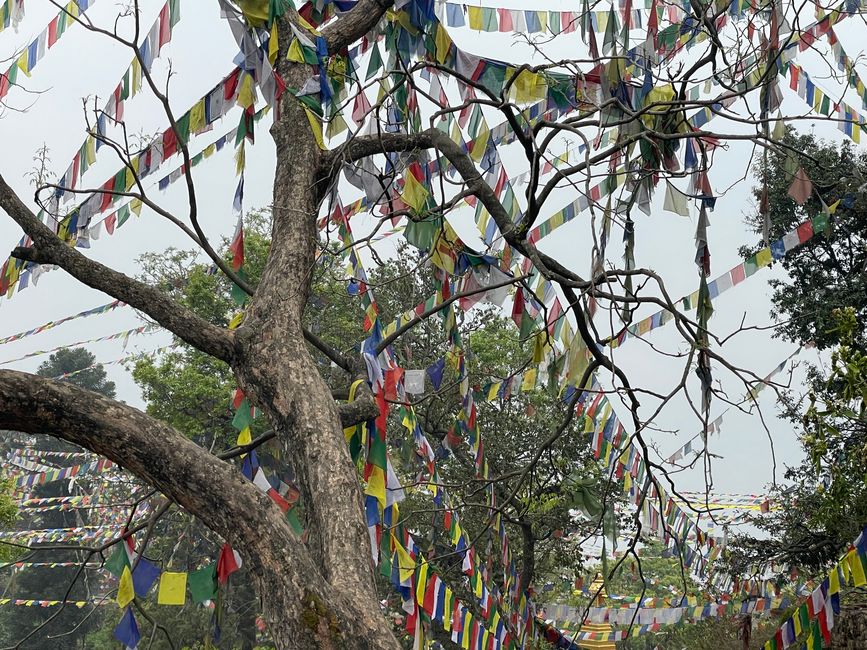
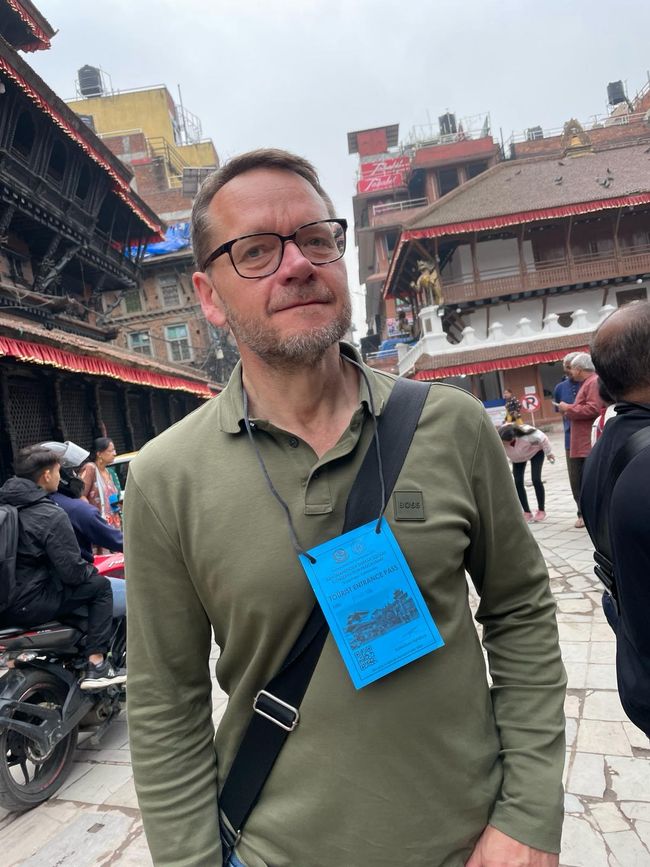
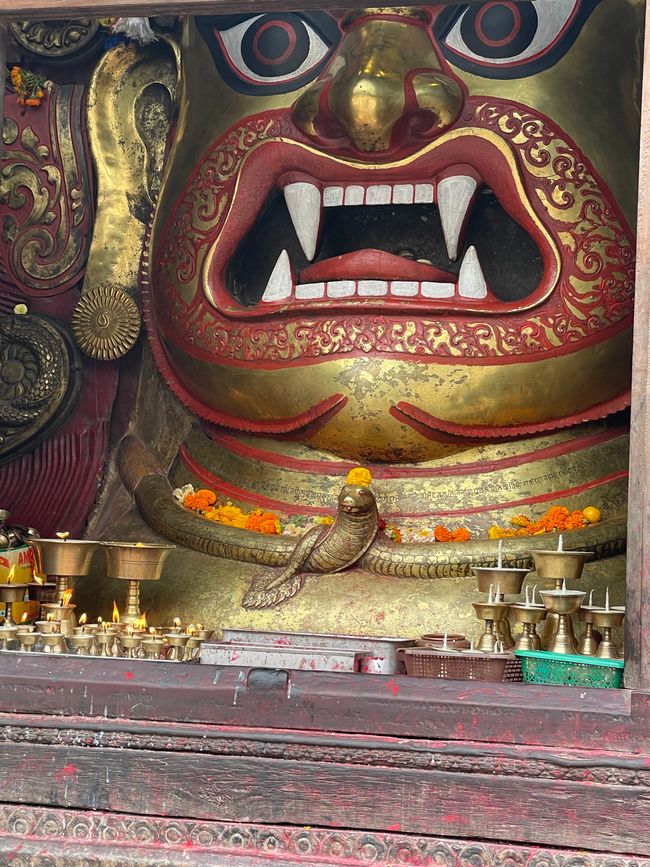
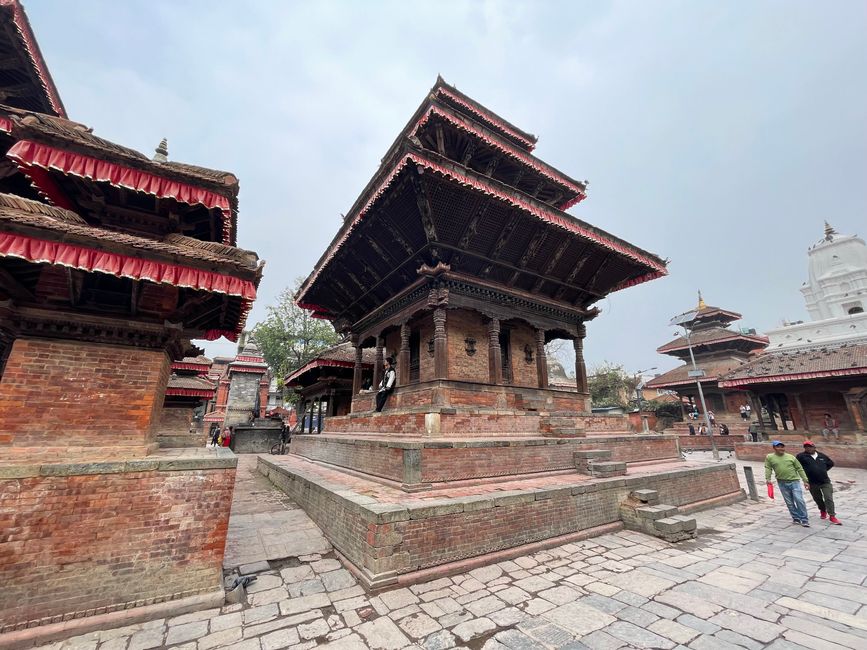
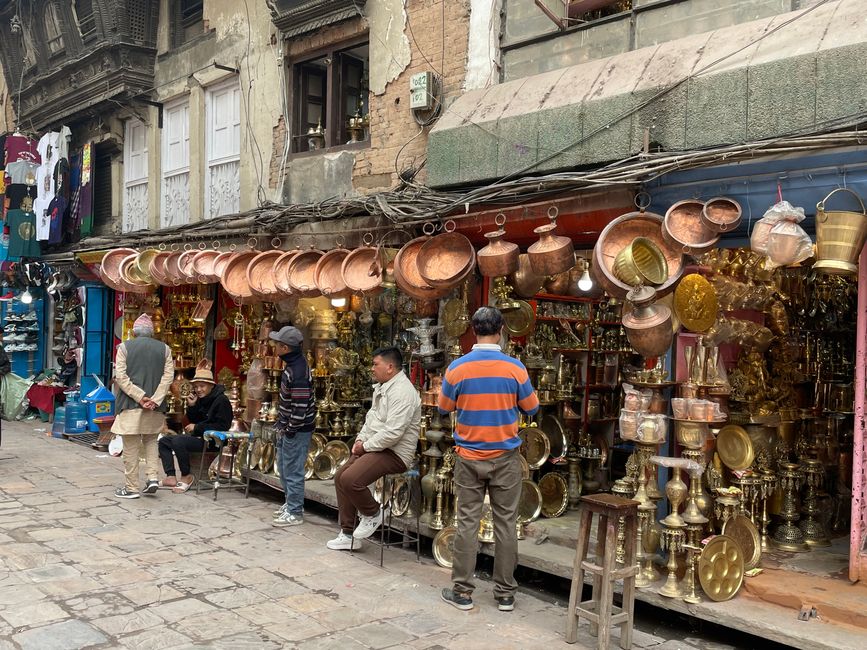



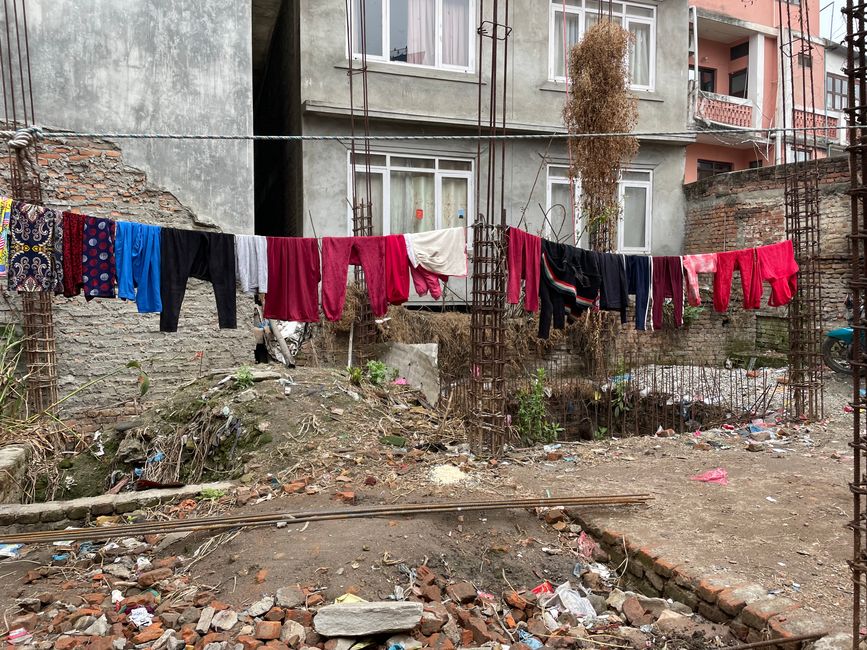
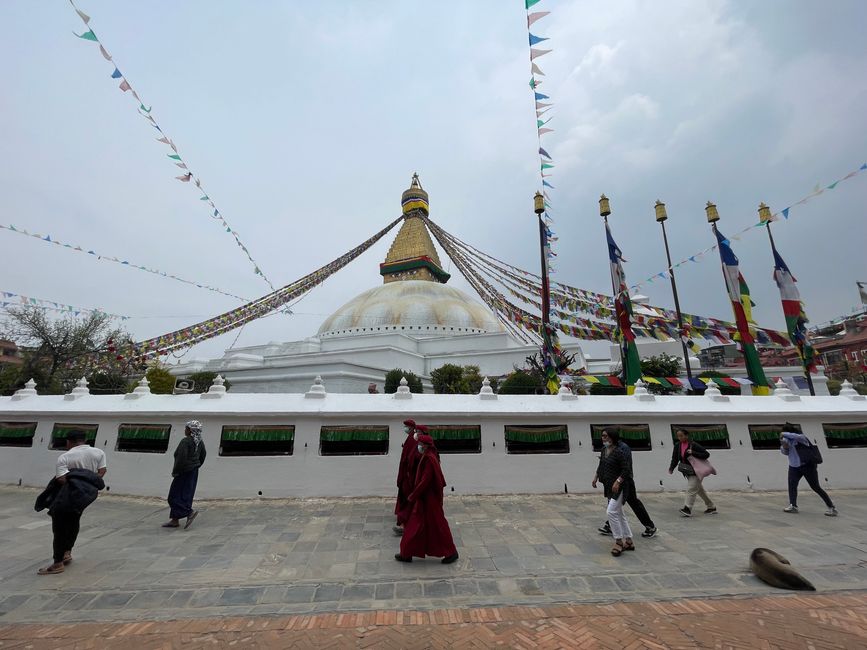
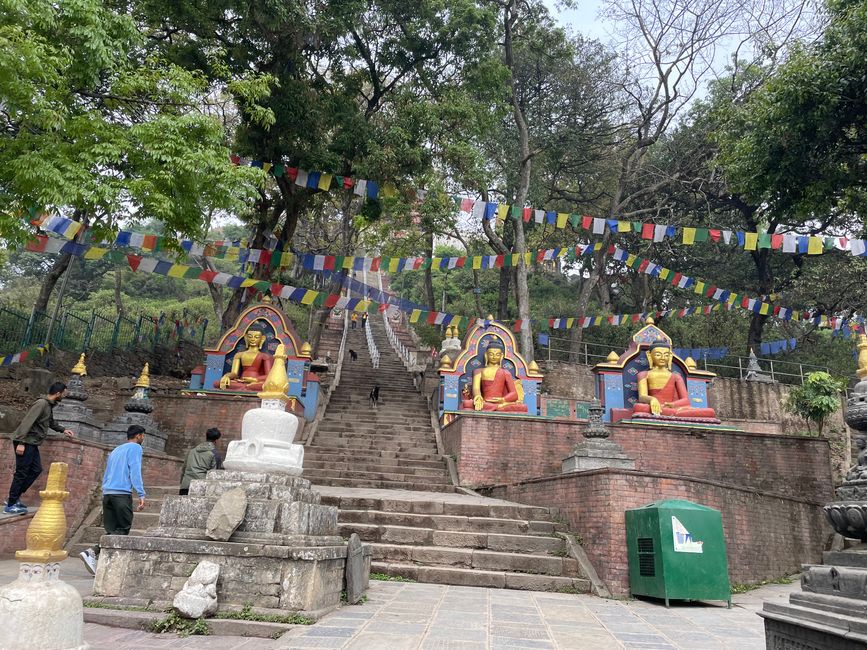
Abonējiet biļetenu
On the second day - after acclimatizing to the pulsating, busy hustle and bustle - we get to know the city together with a driver and a guide from the perspective of motorized road users and we can recover from the overstimulation of traffic-related sensory impressions experienced the day before and focus entirely on the cultural aspects of this city.
Swayambhunath Stupa - also called the Temple of the Monkeys
After a 20-minute drive, we arrive at the foot of the temple complex in the west of the city. The Swayambhunath Stupa is considered to be one of the oldest temple complexes in the world (the inner buildings are around 2,500 years old). 365 steps up and 20 minutes later we come across many people, meditating lamas, believers making sacrifices, countless and sometimes aggressive monkeys (who also like to steal the mobile phones of careless tourists), stray dogs and pigeons that line the huge area around the stupa. People and animals seem to have absolutely equal rights in their existence in this place.
This magical place reveals itself to be a mirror of Buddhist philosophy, according to which animals - just like humans - are sentient beings and want to achieve happiness and avoid suffering.
This spiritual atmosphere is accompanied by a discreet hustle and bustle, where all kinds of commercial items from singing bowls to coconuts are sold to men and women.
Unfortunately, we are denied an unobstructed view of the city on this day - partly due to the weather and partly due to the approaching smog.
Patan Durbar Square
Here we come across palaces and temples that were built between the 16th and 18th centuries, as well as markets that represent everyday Nepalese life. In contrast to the tourist district of Thamel, where you can stock up on tourist knick-knacks, trekking equipment and oxygen for climbing eight-thousanders, here you can find everyday goods for the locals.
During the tour of the Royal Palace, we encounter the architectural and historical evidence of the former monarchy and learn about the political history of Nepal from the monarchy to the Democratic Republic, which was proclaimed in 2008.
Palace of the Kumari
Until now, I had only heard about the child deities in Hinduism from reports and documentaries. Today, by chance, we are granted the privilege of meeting the incarnated goddess in the form of the child goddess in person - very good karma, I would say.
We enter the palace of Kumari (the child goddess). A three-story building with a large, square courtyard and large windows. At the front we notice a man who is looking out of the open window with a stern expression at the believers gathered below.
Our guide tells us that the girl - the incarnation of the deity Taleju - is declared a deity based on 32 physical characteristics at the age of 2-4 and remains so until the onset of her first menstruation.
This child deity is not allowed to leave the palace, is not allowed to have any social contact with people her own age and is taught by private teachers in her palace. This is not an easy task for teachers, as Kumari is always right and cannot be contradicted. When she reaches puberty, she loses her goddess status and returns to normal life - often with serious psychological and physical consequences. According to our guide, Kamari only shows herself to the believers when she wants to.
Suddenly, the man at the window makes a clear announcement with clear instructions about the ban on taking photographs. Suddenly the courtyard falls silent, everyone gathered there - including us - looks up and after a few seconds a girl with make-up on her face appears at the window with a rigid expression on her face and no emotion whatsoever. At the same time, all the believers are paralyzed with shock and assume a devout, praying posture. Before we can fully grasp the situation, the girl disappears again. As I write this text, I associate this impressive experience with the appearance of the Pope at the window on the 5th floor of the Vatican during the Sunday Angelus prayer. For me, this is a sign that it is in our human nature to be receptive to spiritual guidance.
In summary, it should be mentioned that in this district we encounter a fusion of Hindu and Buddhist culture and architecture and it shows that peaceful coexistence is possible without any clash of cultures.
Boudhanath Stupa
As a final enriching experience, we discover that there are also female Buddhist monks.
We are on a huge circular platform that surrounds the imposing Boudhanath Stupa. We meet many people dressed in orange - men and women - some with orange sun hats to match their clothes. Not really surprising at a holy place. However, we also notice senior citizens who are dressed completely differently than we have seen before.
We get the answer to this question when we take a detour to a small monastery. Here we meet older people again, but this time they are dressed in grey and red. It turns out that many Tibetan exiles live here, who fled their homeland decades ago. They live in Nepal without any legal basis. Unfortunately, the only thing that helps here is prayer in order to cope with everyday life.
As we continue to walk around the stupa, we let the information sink in - we still have Google to delve deeper into the political matter.
After taking in the impressions we have gained, we are driven through the traffic chaos back to the hotel to go to bed early, as we will be picked up at 6 a.m. tomorrow and will fly to Paro in Bhutan at 9 a.m.
Abonējiet biļetenu
Atbilde (1)
Birgit W.
Ein erlebnisreicher Tag sag ich mal. Sehr schön.
Guten Flug nach Buthan! Das Photo vom Mount E. ist sensationell , mir läuft ein.Schauer den Rücken herunter.💥